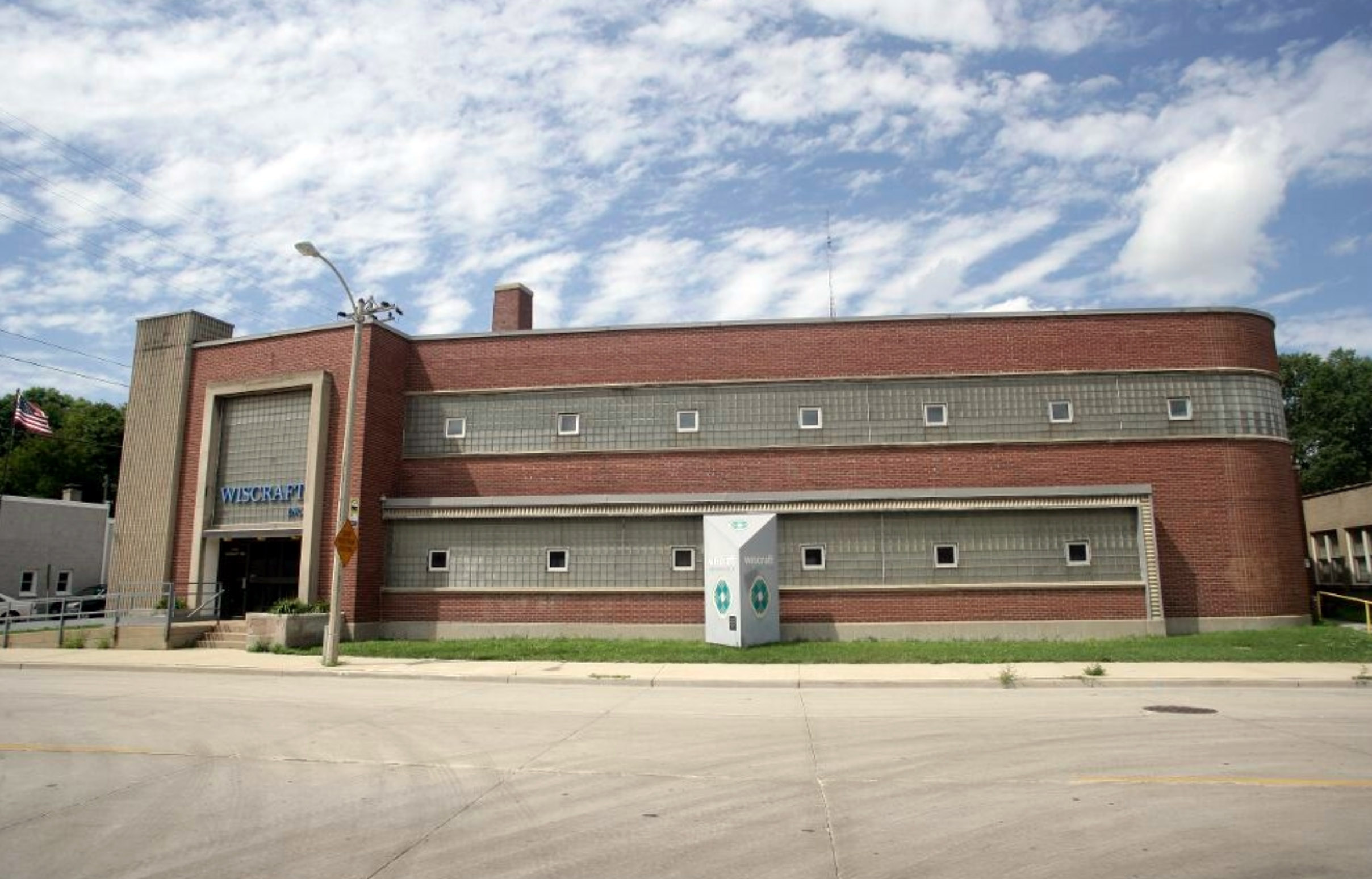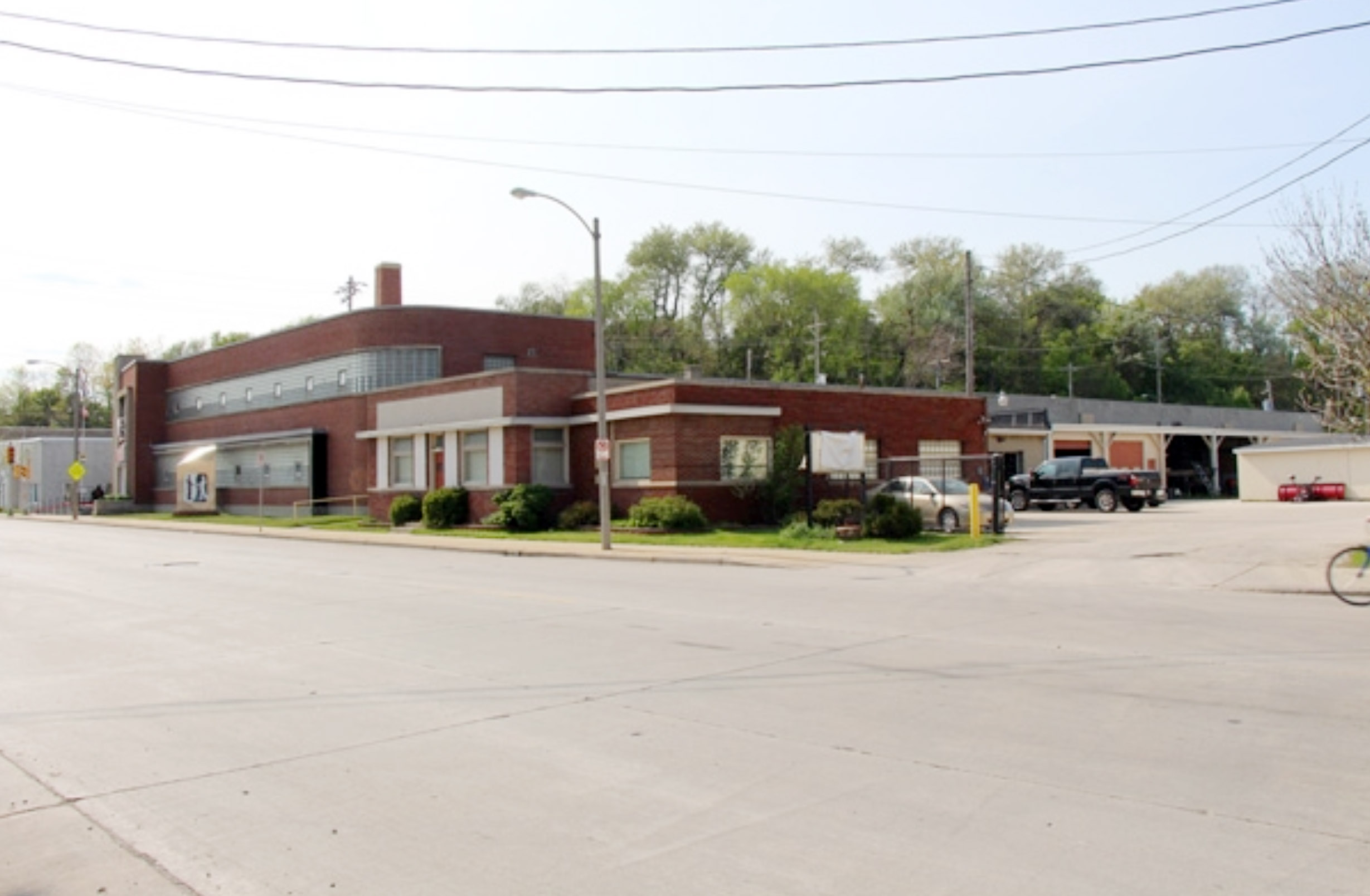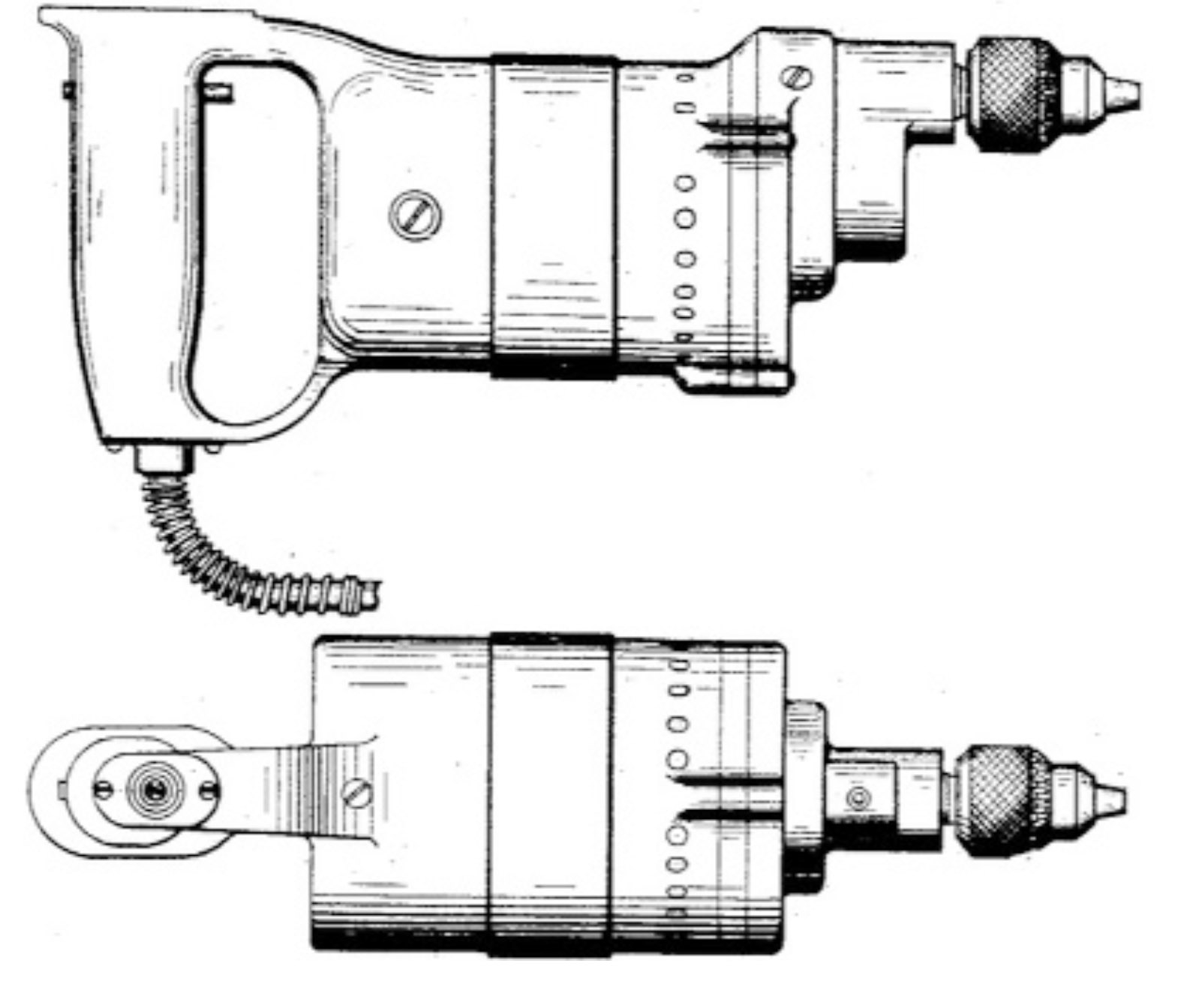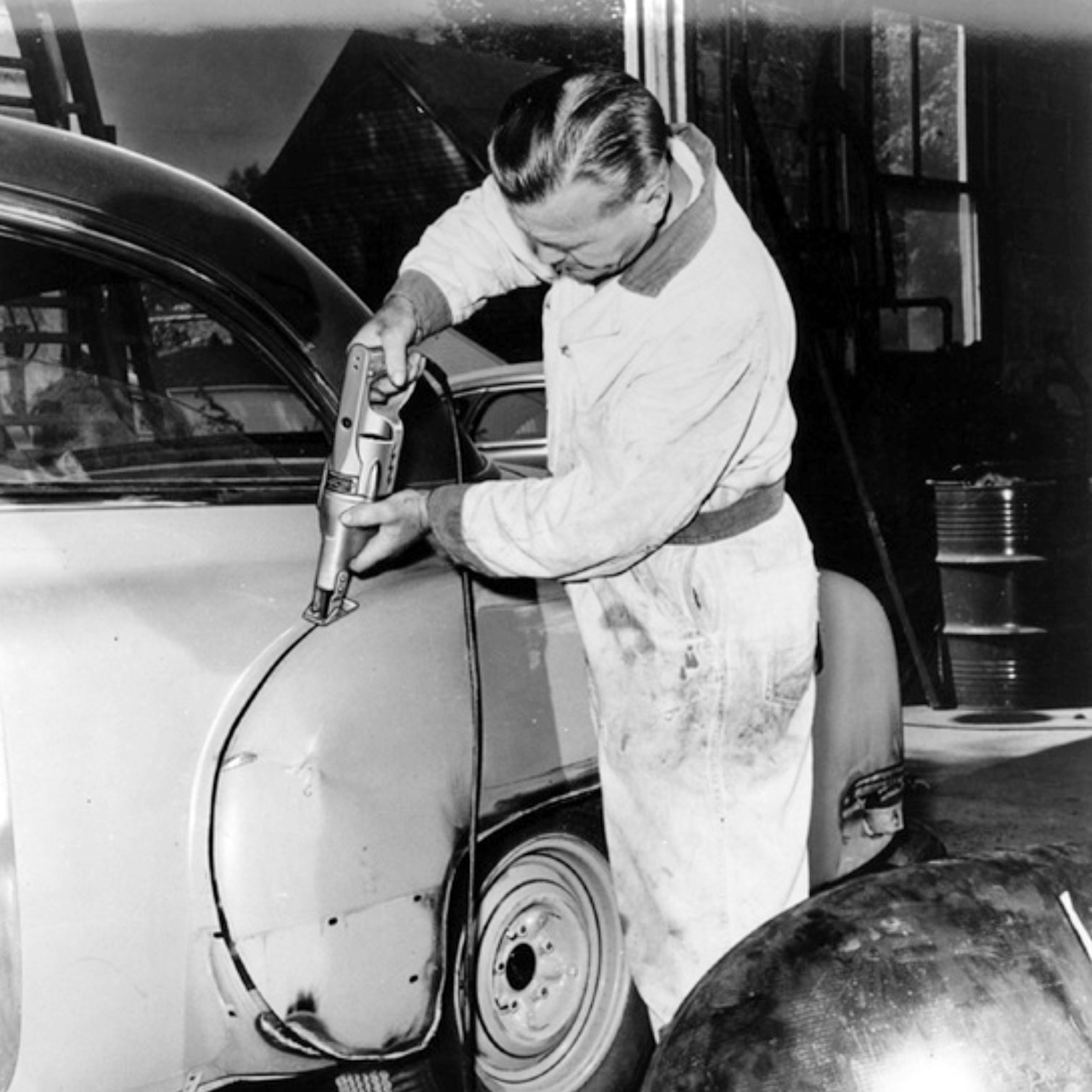Milwaukee Electric Tool and the “Hole-Shooter”

5316 W. State St, Milwaukee, WI. Milwaukee Electric Tool Corp. Headquarters 1940-1965.
Milwaukee: Wisconsin’s Industrial Center
Milwaukee Electric Tool Co., along with Allis Chalmers and Harley Davidson, helped define Milwaukee as an industrial center for mechanical innovation at the turn of the 20th century. This came about because Milwaukee was located next to Lake Michigan, so manufacturers from various industries could easily import materials and export goods. Milwaukee Electric, whose moderne-style manufacturing facility was located on West State Street from 1940 to 1965, first came to prominence with its hole-shooter drill developed to ease the manufacturing of Ford cars. A.H. Petersen Company |

Milwaukee Super Hole Shooter 5/16” drill ca. 1927-1935
A.H. Petersen Company
A young Milwaukee-based machinist and mechanic, Arno Petersen was approached by Henry Ford in 1918 with a request for the design and production of an electric drill light enough to be operated in one hand and powerful enough for his workers to use on the Ford assembly lines. By 1922, Petersen had developed the hole-shooter drill in his workshop on Fratney St. in the Riverwest neighborhood. The hole-shooter, a ¼” capacity power drill that weighed a mere 5 lbs. was much lighter than other drills available at the time. Ford and other manufacturers appreciated the lightweight, yet capable design, of this new power drill. |

5316 W. State St, Milwaukee, WI. Milwaukee Electric Tool Corp. Headquarters 1940-1965. [link]
Milwaukee Electric Tool
Following a series of disastrous factory fires, Petersen decided to sell the company and rights to the hole-shooter drill to his marketing manager, Albert Seibert in 1924. Seibert re-incorporated the business as the Milwaukee Electric Tool Corporation. From 1924 to 1939, Milwaukee Electric continued to improve the drill’s original design based on product repairs and research at a shared manufacturing facility with the Kempsmith Manufacturing Co. in West Allis. Due to its superior design, the hole-shooter was adopted by the U.S. military during WWII to aid in the production of aircraft and armament. During this time, Milwaukee began to expand its product lines to include grinders, sanders, and larger capacity drills. |

US Patent D59,678. A.H. Petersen Co. Hole-Shooter Drill. Nov, 15, 1921 [Link]
Modern Innovations
Due to Milwaukee’s expansion of product lines and growing customer base, the company moved to a new 36,000 sq. ft. manufacturing facility and headquarters at 5316 W. State St in the Quarry Heights neighborhood in 1940. The streamline-moderne structure reflected Milwaukee’s innovative ideals and modern branding. The building features a two-story office building that is highlighted by the rounded red brick corners and glass-block construction. The manufacturing facility, connected to the modern structure is a one-story sprawling machine shop that expands from State St. down to the end of N. 54th St. Many of Milwaukee’s major electric tool advances such as the right- angled drill, and the Sawzall were developed in this facility. Milwaukee would eventually outgrow this location in 1965 and moved to a new 200,000 square-foot headquarters in Brookfield, Wisconsin, where they remain today. New ownership and globalization of the Milwaukee Electric Tool brand in the early 2000s led to advancements in cordless tool technology, and much of their manufacturing was sent overseas. |

Milwaukee Hole Shooters in use in the production of an aircraft during WWII. Location and Date Unknown. via Magnificent Machines of Milwaukee by Thomas Fehring

Demonstration of the use of an early Milwaukee Sawzall cutting sheet metal on an automobile. via Milwaukee Tool’s social media.

Milwaukee Electric Tool Corporation headquarters from 1940-1965 at 5316 State St. Milwaukee, Wisconsin.

Milwaukee Electric Tool logo ca. 1940s
Timeline
|
Demographics
I am an MFA candidate at the University of Wisconsin-Madison. I received a BFA from Tyler School of Art at Temple University. I am an artist and printmaker with interests in material culture and industrial history. I decided to research the Milwaukee Electric Tool Co due to their presence in the current construction industry. I felt compelled to research the 1924 Hole-Shooter drill for its design aesthetics, and ended up learning that early innovations in power tool development by Milwaukee has had lasting effects on how tools are made and marketed today. |

David Love
davidllove.com
History 401 [Spring 2023]
Leslie A. Bellais
contact

